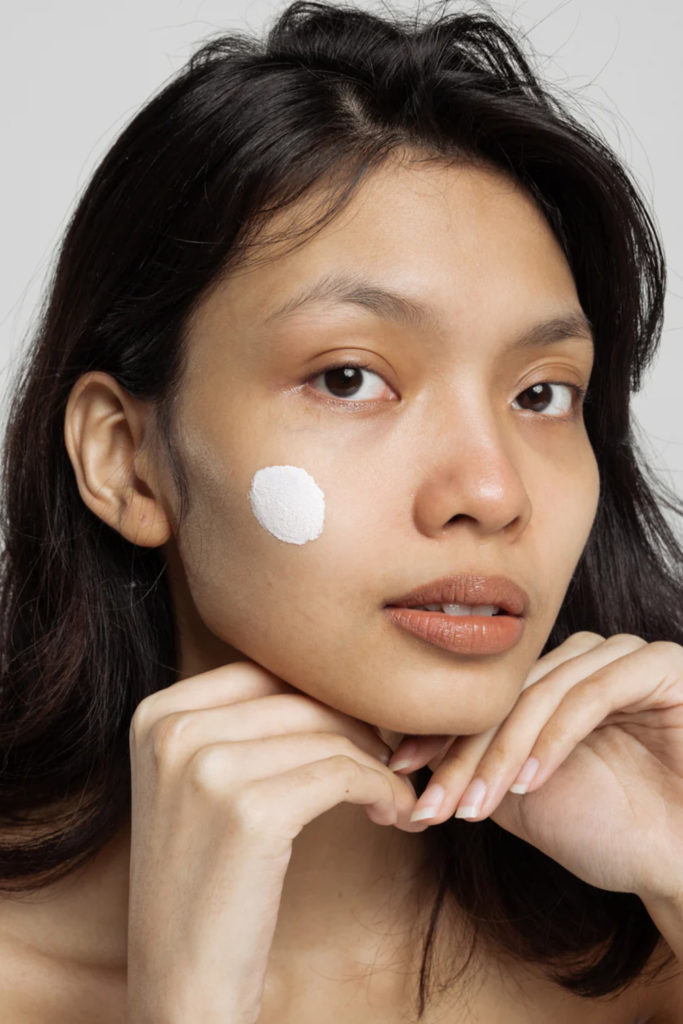
Your Ultimate Guide To HA Injectables With Galderma
By
3 days ago
Tips from the experts
Filler is going through a PR crisis. But for leading aesthetic doctors, it’s by far the best way to boost volume and subtly restructure, says Annabel Jones. Galderma gives you everything you need to know, from technique to formulations.
Galderma’s Guide To HA Fillers
No thanks to a loud minority of over-filled faces, dermal filler has been under an unfair amount of scrutiny. Speak to any competent aesthetic doctor, however, and they’ll confirm that hyaluronic acid injectables are still the best way to replenish lost volume – and the appetite for plush, hydrated skin isn’t waning. If anything, it’s the thing most of us aspire to.
The differentiating factor between good and bad filler is a safe, high quality product injected by the best hands. Dr Sindhu Siddiqi from the No Filter Clinic in London is educating her patients on the merits of HA fillers. ‘There’s a lot of misinformation about dermal fillers which is creating concern,’ she explains, adding: Nothing else is going to give you as good a result for volume replacement.’
Dr Siddiqi, who is known for her natural looking results is keen to set the record straight. One overzealous injector doesn’t represent the thousands of skilled practitioners who are using the appropriate methods in conservative doses. On the contrary, the best results are often undetectable, thus the unfortunate few who’ve been subjected to ‘bad work’ reap the lion’s share of unfavourable publicity.
For the uninitiated, all dermal fillers are one and the same. And yet just as we all have a different face and skin type, there are numerous variations within the filler category; each one with a distinct use and outcome.
What Is An HA filler & How Do They Differ?
‘Most reversible fillers are made from Hyaluronic acid which we all have naturally in our own skin. We also contain the enzyme that breaks it down,’ says Dr. Siddiqi who rejects the recent rumblings that filler stays around for life.
‘It’s true that people metabolise filler at different rates. And some of the older solutions were designed to last for longer, but HA filler is not a permanent solution.’
She explains: ‘Filler is made up of Hyaluronic acid chains that are cross linked together to give structure. The amount of cross-linking determines how much structure and volume you can achieve. The more cross-linking, the longer it tends to last.’
The ideal way to inject HA filler, says Dr Siddiqi, is to select the appropriate filler with the right degree of cross-linking for the area that needs treating.
‘When injecting structural areas of the face such as the jawline or cheekbones, for instance, you want a filler with more cross-linking. That way, you can achieve more structure with less.’ Siddiqi suggests that the often mocked ‘pillow face’ is down to using a filler that’s not fit for purpose ‘If you select one with less cross-linking and expect it to provide structure, then you’d need to inject a larger amount which has the potential to make the skin look puffy,’ she explains.
Everyone’s lifestyle, facial structure and skin quality is different, stresses Siddiqi, which is why it’s so important to treat each patient individually. ‘Someone with very thin skin is not going to do well with certain fillers because, even with the perfect technique, thin skin is going to be less forgiving, in which case you have to choose a lighter solution.’ Whereas someone with thick skin may need more to get the same results,” she emphasises.
Cross-linking isn’t the only factor when it comes to HA injectables. The amount of hyaluronic acid within the filler is also key. ‘Some fillers have more chains of HA and others less chains. It’s vital that the practitioner has the knowledge to know which one is right for your skin and facial structure.
What Age Is Filler Appropriate For?
As a general rule, Dr. Siddiqi, recommends HA fillers for patients in their 30s, 40s and 50s – with good skin. ‘I sometimes suggest filler for someone in their 60s, but in this decade hydration is all important so skin boosters tend to work better, especially around the mouth.’
It’s also about knowing when to move on from fillers. ‘If you continue to fill a face that’s beginning to sag it’s just going to look heavy, so at instead I’ll focus on using skin boosters on the lower face that will improve skin quality – there’s lots you can do as you continue to age from skin tightening lasers to bio-stimulators like Sculptra.’

Restylane Lyft: The Structural One
Restylane dermal fillers have an unmatched safety record of 28 years. Designed in a unique and customisable way to other HA fillers, all Restylane products can be injected in a bespoke manner, allowing the practitioner to give each patient a result that is appropriate for the individual’s facial structure and key concerns. “Our most popular filler in the clinic is a structural one called Restylane Lyft. You get the most projection for the least amount of product – without volumisation, and it integrates extremely well,’ says Siddiqi. ‘We can use it in lots of different areas but mainly it’s good for cheekbones, chin, jawline and the mid-face. Plus, because it’s so precise, it stays where it’s injected with minimum risk of migration.’
Restylane Skinboosters Vital: The Hydrating One
‘The other HA filler I use a lot is Restylane Vital. It’s technically a skin booster, but it’s very unique because it has a little bit of cross-linking,’ says Siddiqi. She adds: ‘Skin boosters are not designed to last very long, you have to keep topping up every three to four months. But because of the cross-linking, Vital acts a little bit like a filler – you can use it anywhere (except under the eyes) but it works really well on the nose-to-mouth lines and around the lips for a hit of hydration with a tiny amount of structure. ‘With Vital, it can be injected with a cannula so it blends in seamlessly. It’s great on neck lines too.’
Restylane Kysse: The Lip Enhancer
‘If someone wants a longer lasting result, I would use something like Restylane Kysse, a light filler with a very nice hydrating effect for a fuller natural look that restores softness and colour too. This works well for lips when it’s injected superficially into the body of the lip,’ suggests Siddiqi. ‘People tend to worry about their lip filler migrating but if it’s done properly it’s not an issue. Some lip tissue is very tight and prone to migration, in which case I’ll inject a minimal amount over two to three appointments to get the desired effect.’ She adds: ‘More generally Kysse is a dynamic product that’s good for mobile areas of the face.’
Dr Sindhu Siddiqi is a Key Opinion Leader for Galderma. For more information, visit galdermaaesthetics.com
GB-RES-2500050 DOP APRIL’2025
Sponsored by Galderma






